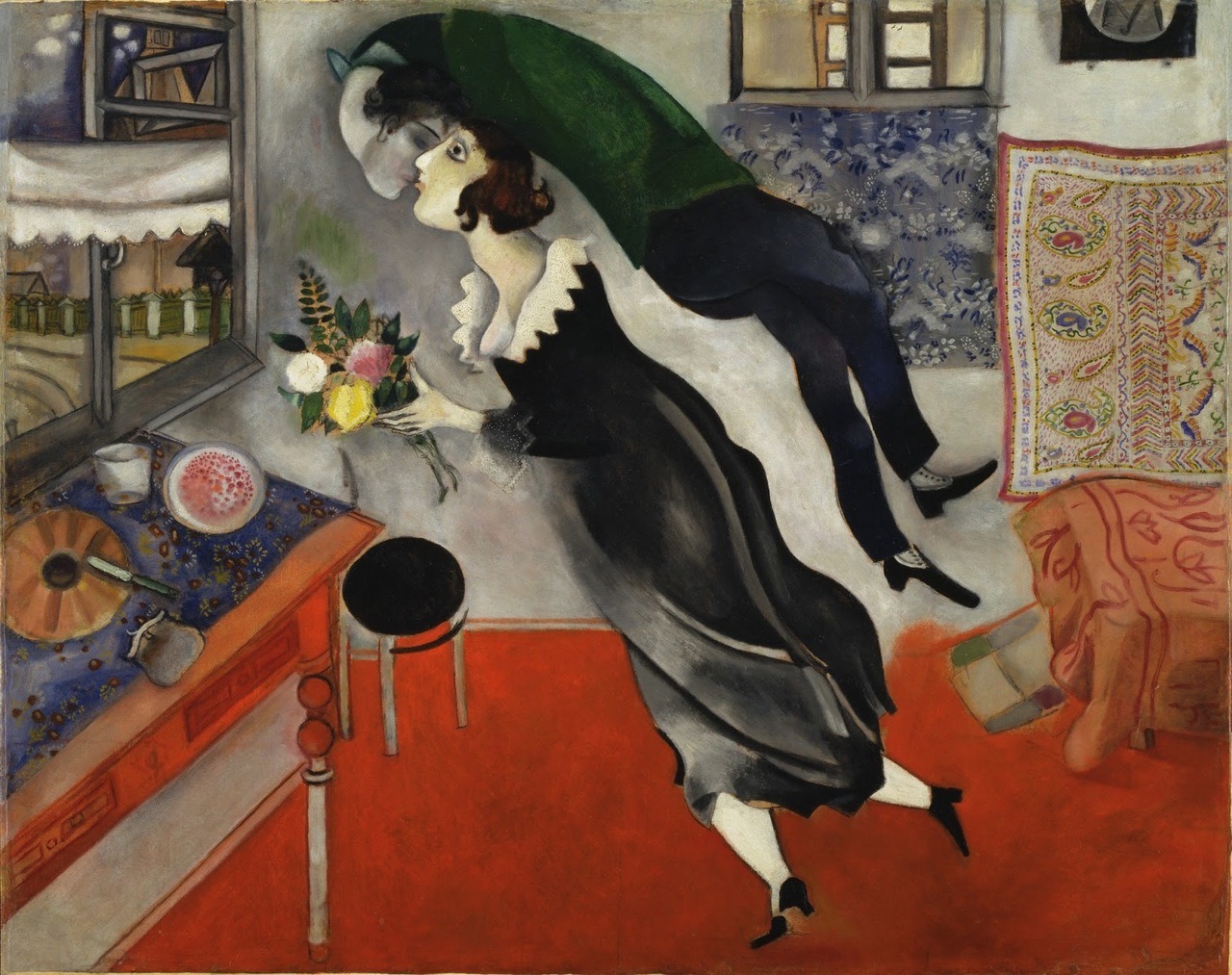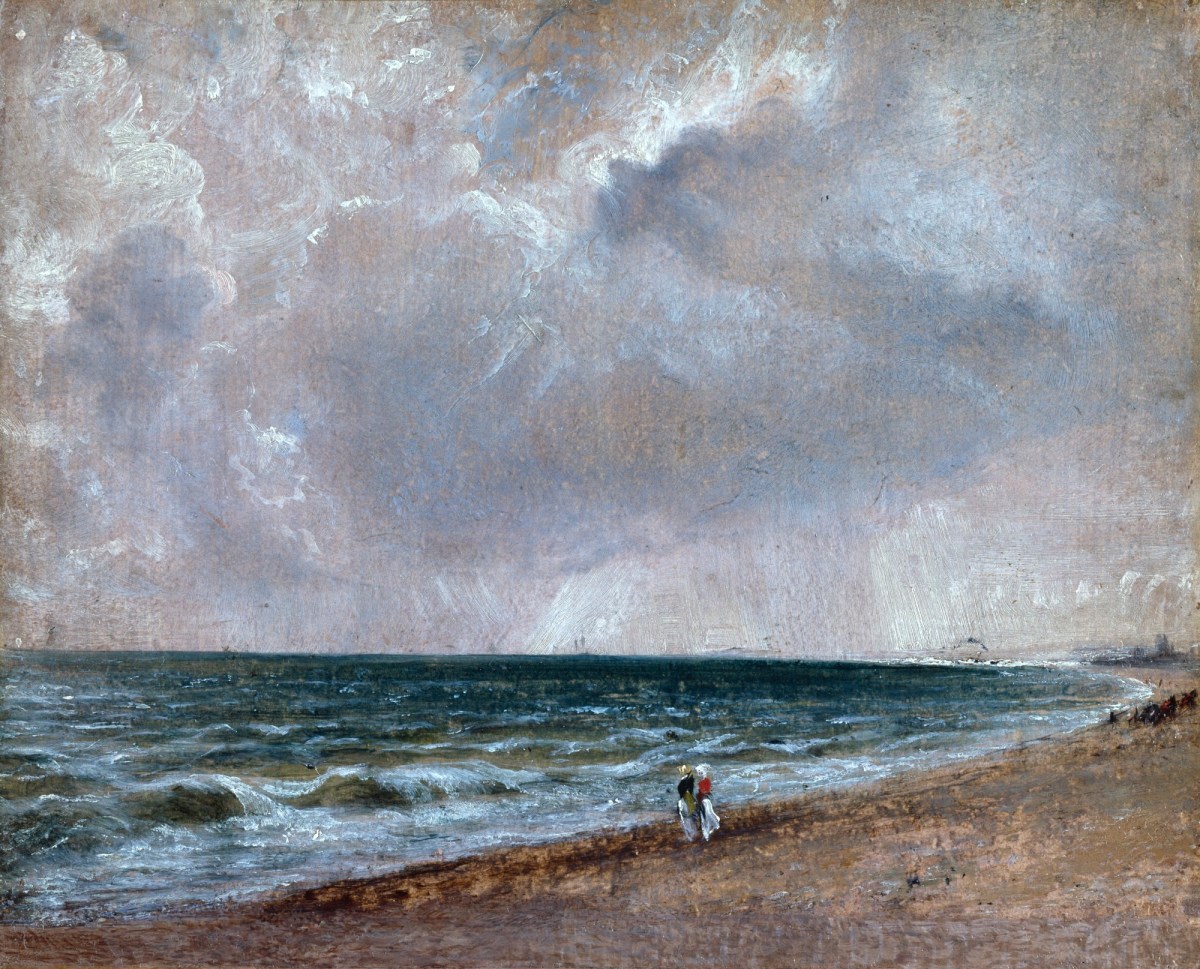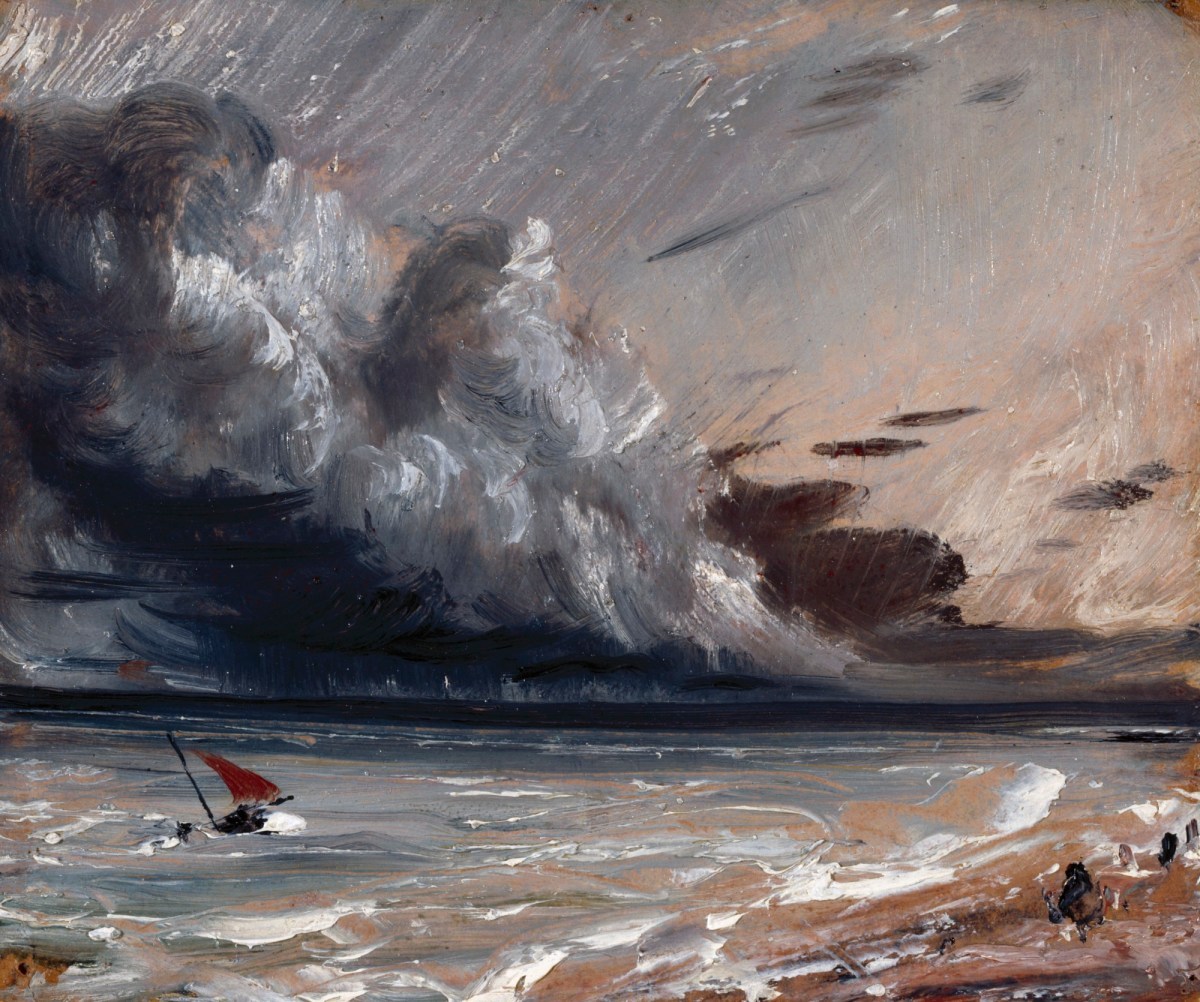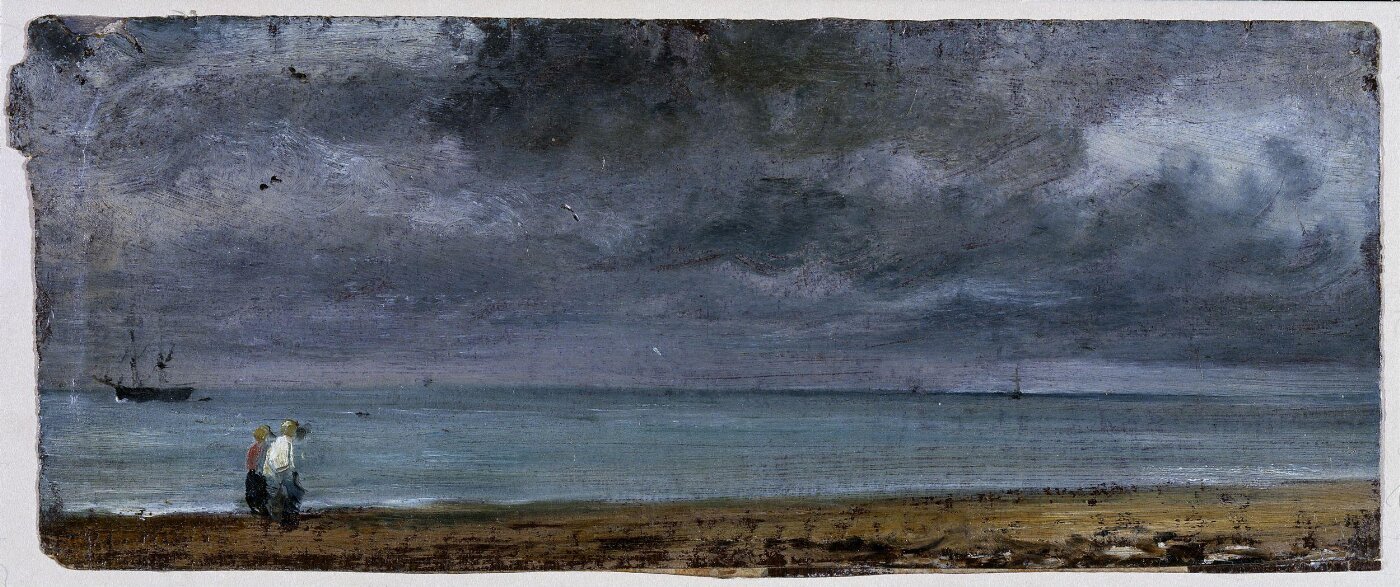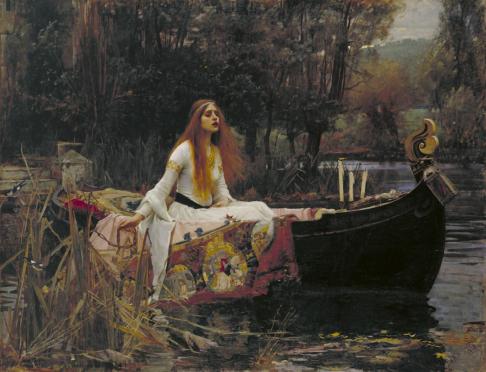“O Krishna! Ever since she has seen you, she does not want anything else. She does not look at a lotus nor does she want to look at the beautiful moon. Even though by nature she is romantic, she does not want to listen to love stories. The beauty of three worlds do not touch her. If she does not see you, she will die. Please come and meet her!”
(From the Rasikapriya, as translated by Harsha V. Dehejia)
 Radha and Krishna in the Grove, opaque watercolour on paper, Pahari, Kangra, ca. 1780
Radha and Krishna in the Grove, opaque watercolour on paper, Pahari, Kangra, ca. 1780
These past few weeks I have really been enjoying these watercolours of divine lovers Radha and Krishna. Their love and devotion are pure and strong, but still there is a certain playfulness and naughtiness in their love and these artworks beautifully illustrate these different moments of love, from sweet tenderness to jealousies, the yearning and the waiting, the love gazes and adoration, all in the beautiful, enchanting, verdant nature settings. All the watercolours in this post belong to the Pahari painting school; it is an umbrella term used for Indian paintings, mostly miniature, that were made in the Himalayan hill kingdoms of North India from the seventeenth to the nineteenth century, notably Kangra, Guler, Garhwal and others. The theme of love is an all pervading theme in the world of arts, but in no other art movement, in no other time has the cult of love been cherished to such an extent. Love seems to have been a religion and the very air that everyone was breathing, and this certainly tells us something about the culture and about the times in which these paintings were created, and not only created but also cherished and enjoyed. Vibrant colour, delicacy, sensuality, female beauty, a perfect dose of tenderness and naughtiness; these paintings posses all these elements – in abundance.
Perhaps my favourite out of these artworks is the one above called “Radha and Krishna in the Grove”, painted around the same time that the French Rococo painter Jean-Honore Fragonard was painting his amorous couples, stolen kisses and secret park meetings. Lovers, flirtatios and natural setting; similar motifs in both examples. The presentation of nature in Fragonard’s paintings is beautiful and his vision of love alluring and playful, but nothing can compare to the Beauty of Nature and Beauty of Love in the Kangra paintings on love. In this watercolour Radha and Krishna are shown enjoying their time and one another by a flowing stream of water, sitting on a soft bed of plaintain leaves, hidden by the lush tree tops, delighting in the fragrance of all the flowers. The nature around them is vivacious and alive, as if reflecting the ardours of love between the lovers. Krishna is dressed in his traditional yellow attire while Radha is looking delighful in gold and red. There are pink lotus flowers blooming on the surface of the river, all eager to hear the sweet nothings whispered between the lovers. It is just such an idyllic painting. The nature in all these watercolours absolutely mesmerises me.
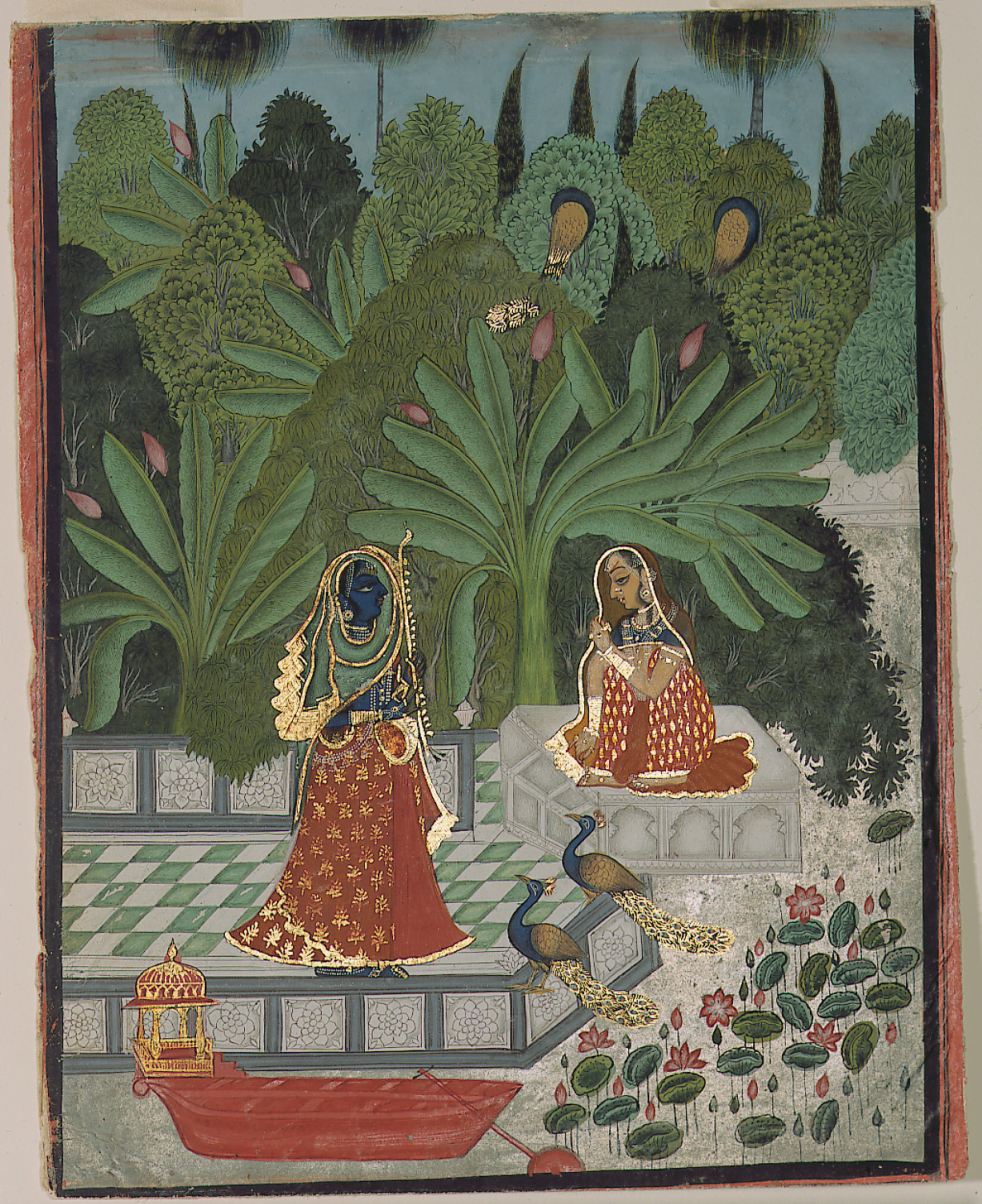
Krishna Uses A Ruse To Meet His Beloved, 1781
This is a dream-like moment, but things are not always so sweet and dreamy between Radha and Krishna. In “Krishna Uses a Ruse to Meet His Beloved”, Krishna is seen dressed in an attire of a gopi so that Radha will think he is a gopi and will confide in her about her love woes. I love the gold details in this watercolour, the trees again are stunning but I also I love the little details that help build a story such as the little boat, for example. It makes me imagine that Krishna used that boat to come. Will they leave together on the boat to some far-off shore like the one in the watercolour above, where they can enjoy private moments? The lotus flowers are all-pervading, noisy yet beautiful creatures. Never kiss in front of them – they will tell.

Radha imagines Krishna with other women, from Gita Govinda, attributed to Purkhu, 1820

Krishna flirting with the Gopis, to Radhas sorrow. Kangra Painting, c. 1760
I also really love the watercolours where Radha is telling her friend about Krishna suspected cheating; in the lower right portion of the painting there is Radha confiding in her friend, while in the other parts of the painting there are different, imagined scenes of Krishna seducing other alluring gopis and enjoying himself while Radha is alone. The following watercolour is a proof that these are not mere jealous imagining on Radha’s behalf; there is Krishna is his yellow-like-the-Sun attire seducing with his appearence alone, and then words, all the beautiful and smitten gopis. Yes, yes, Radha is his special one, his one and only, but tell it to her when such a flirtatious scene is going one! Woe is her. But we know that Krishna will come back soon to comfort her, seduce her and assure her of his love and devotion, and she will again be all loving and trusting and sweet. It is the eternal dance of love, played by the sound of Krishna’s flute and Radha’s heartbeats. This is the downfall of being in love with a charmer.

Krishna Spying on Bathing Radha; truly how naughty!?
There are playful moments such as those when Krishna is spying on Radha while she is bathing, or when Krishna is wearing Radha’s clothes and Radha is wearing Krishna’s clothes, as presented in the watercolour bellow, imagine just how entertaining that would have looked like in real life, even in painting it is amusing, and then there are tender moments where Krishna is combing Radha’s hair and she is taking quiet delight in it, smiling contently because she knows that while he may be gazing at other gopis, admiring their beauty or flirtatiously amusing himself with them, that in the end she is the one, the Queen of His Heart:
“Something in the way she moves
Attracts me like no other lover
Something in the way she woos me
I don’t want to leave her now
You know I believe and how
Somewhere in her smile she knows
That I don’t need no other lover
…
(The Beatles, Something)
I really must take a moment to appreciate the absolute beauty of nature in all these watercolours! I am drawn to it as the bumblebee is drawn to lavender. I love the attention to details when it comes to the depiction of the landscape. In painting after painting, it is just stunning – a true feast for the eyes, and the heart. Every tree is individualised. Every little leaf, every little pink or red flower is vibrant and alive, oozing its fragrance over the paper and over the centuries that have passed since it was painted. The various shades of green and blue, the layer upon layer of different plants, the little leaves and little blossoms, everything so palpably dreamy and delicate. Truly, the characters of these paintings are not just the figures of Krishna and Radha, but all the trees and flowers and lotuses and birds. One thing I know for sure, a piece of my heart belongs now to these painting, or rather, to the magical land that was depicted and created in them, and it is a land of Love and a “land of fragrance, quietness, and trees, and flowers”, to quote John Keats’s poem “Hyperion”. When I think of some famous western representations of love and lovers in art – how lifeless and bland they seem to my eyes now. Compared to the vibrancy and magic of these Kangra paintings, they seem grey in comparison. The real tenderness, the real passion, the real union of souls; I find it all in these paintings of Krishna and Radha.
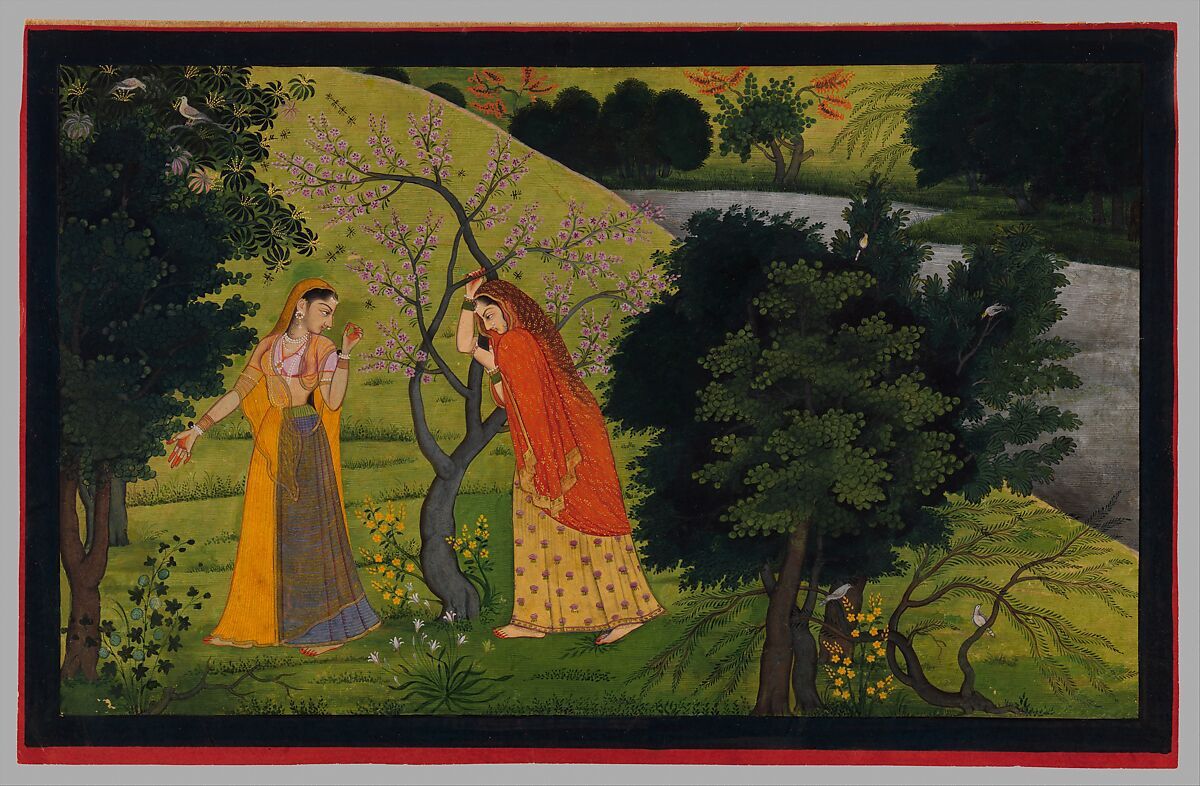
Radha with Her Confidant, Pining for Krishna, Folio from the Second or Tehri Garhwal Gita Govinda (Song of the Cowherd), 1775-80

Radha and Krishna Dressed in Each Other’s Clothes India, Himachal Pradesh, Kangra, c 1800-1825, Opaque watercolor and gold on paper

Krishna Combs Radha’s Hair c. 1820
“Charm of my life! by whose sweet power
All cares are husht, all ills subdued–
My light in even the darkest hour,
My crowd in deepest solitude!”
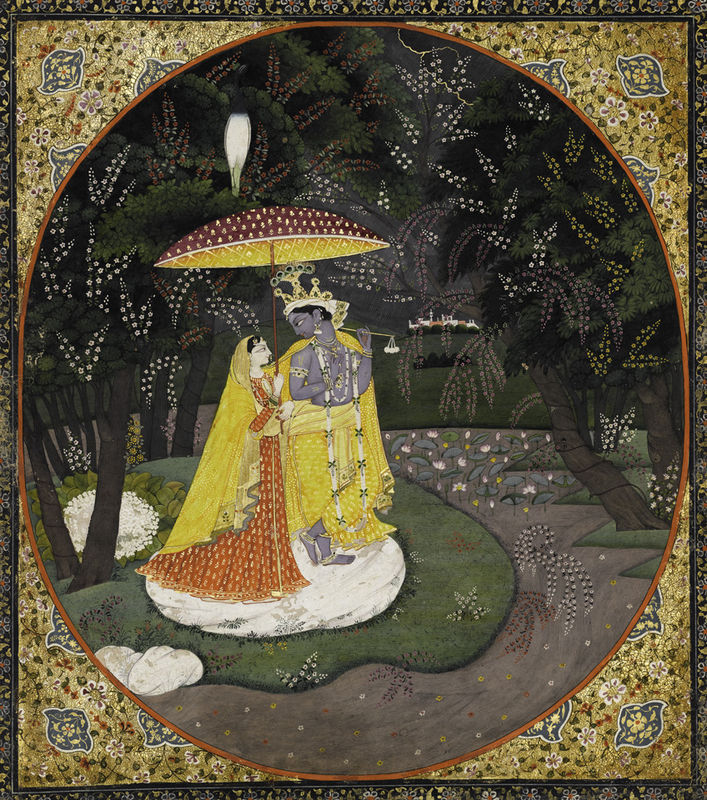
Radha and Krishna shelter under a Parasol. Attributed to the Purkhu family workshop, Kangra Miniature, c. 1825
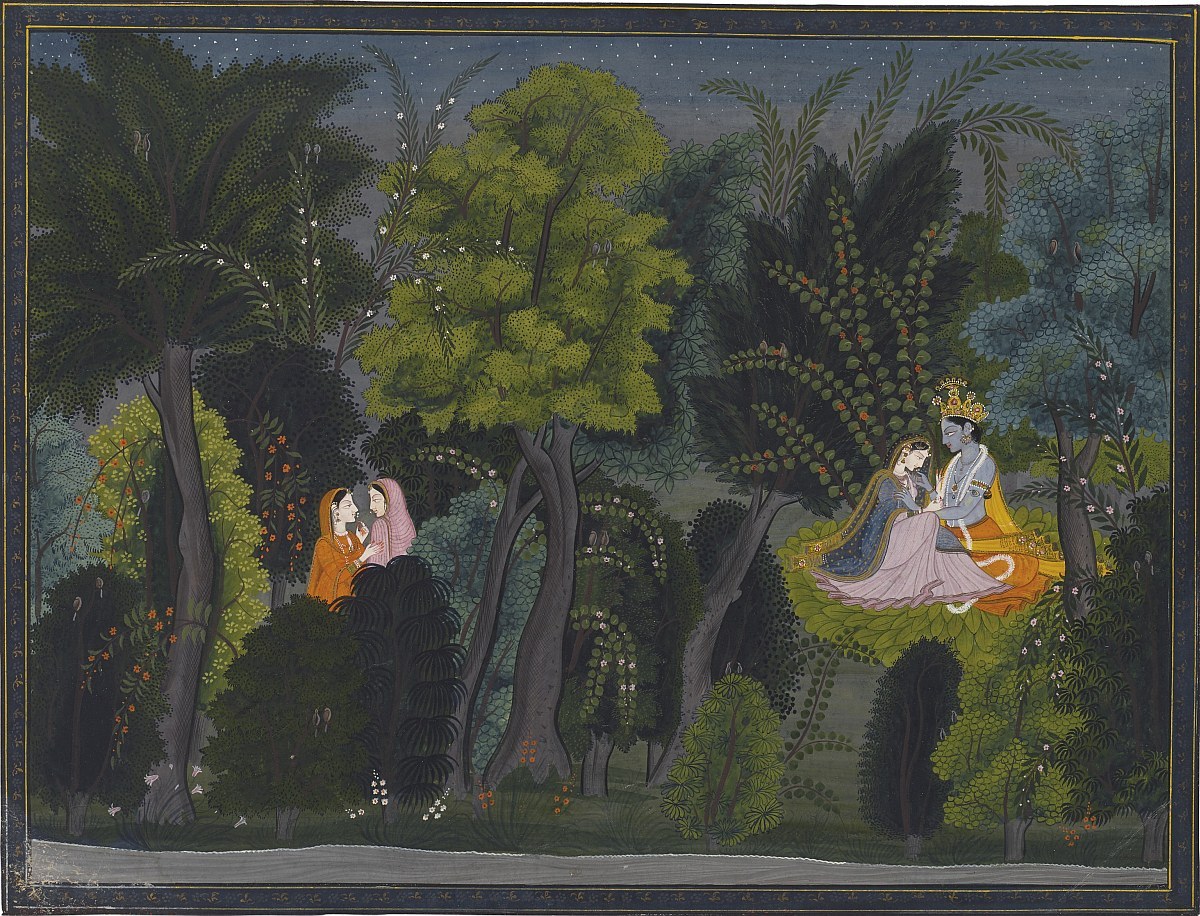
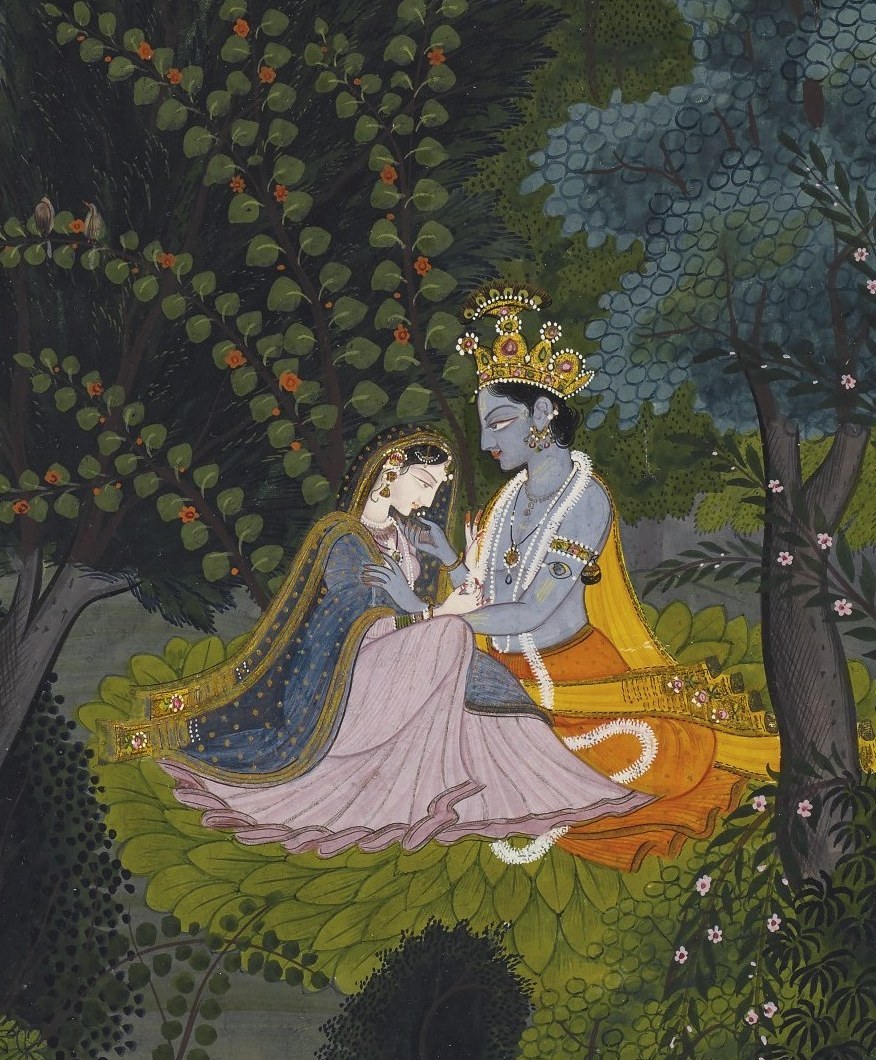
Krishna Charms Radha Forest Glade, An Illustration From ‘Lambagraon’ Gita Govinda Series. Circa 1820. Kangra.

Radha and Krishna take shelter in a tree, Garhwal, 1820-1830

Krishna Adorning Radha’s Hair ca. 1815-20, Unknown Artist (Indian), opaque watercolor and gold on paper
Tags: art, art blog, Beauty, Dreamy, gopi, Indian art, Kangra paintings, Krishna, lotus, love, miniature painting, Nature, Pahari, Radha, romance, Romantic, Vaishnavism, watercolour
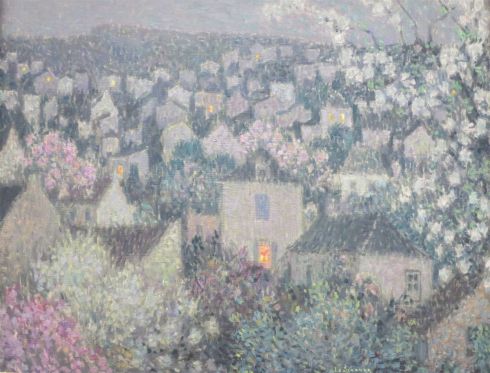 Henri le Sidaner, Soir de Printemps, c. 1920
Henri le Sidaner, Soir de Printemps, c. 1920


























